
Performance marketing company QuinStreet (NASDAQ: QNST) announced better-than-expected revenue in Q2 CY2025, with sales up 32.1% year on year to $262.1 million. On the other hand, next quarter’s revenue guidance of $280 million was less impressive, coming in 5.1% below analysts’ estimates. Its non-GAAP profit of $0.25 per share was in line with analysts’ consensus estimates.
Is now the time to buy QuinStreet? Find out by accessing our full research report, it’s free.
QuinStreet (QNST) Q2 CY2025 Highlights:
- Revenue: $262.1 million vs analyst estimates of $260.3 million (32.1% year-on-year growth, 0.7% beat)
- Adjusted EPS: $0.25 vs analyst estimates of $0.25 (in line)
- Adjusted EBITDA: $22.13 million vs analyst estimates of $22.15 million (8.4% margin, in line)
- Revenue Guidance for Q3 CY2025 is $280 million at the midpoint, below analyst estimates of $295 million
- EBITDA guidance for Q3 CY2025 is $20 million at the midpoint, below analyst estimates of $23.98 million
- Operating Margin: 1.5%, up from -0.7% in the same quarter last year
- Free Cash Flow Margin: 10.2%, up from 6.5% in the same quarter last year
- Market Capitalization: $961.3 million
Company Overview
Founded during the dot-com era in 1999 and specializing in high-intent consumer traffic, QuinStreet (NASDAQ: QNST) operates digital performance marketplaces that connect clients in financial and home services with consumers actively searching for their products.
Revenue Growth
A company’s long-term performance is an indicator of its overall quality. Any business can put up a good quarter or two, but many enduring ones grow for years.
With $1.09 billion in revenue over the past 12 months, QuinStreet is a small player in the business services space, which sometimes brings disadvantages compared to larger competitors benefiting from economies of scale and numerous distribution channels. On the bright side, it can grow faster because it has more room to expand.
As you can see below, QuinStreet’s 17.4% annualized revenue growth over the last five years was incredible. This is a great starting point for our analysis because it shows QuinStreet’s demand was higher than many business services companies.
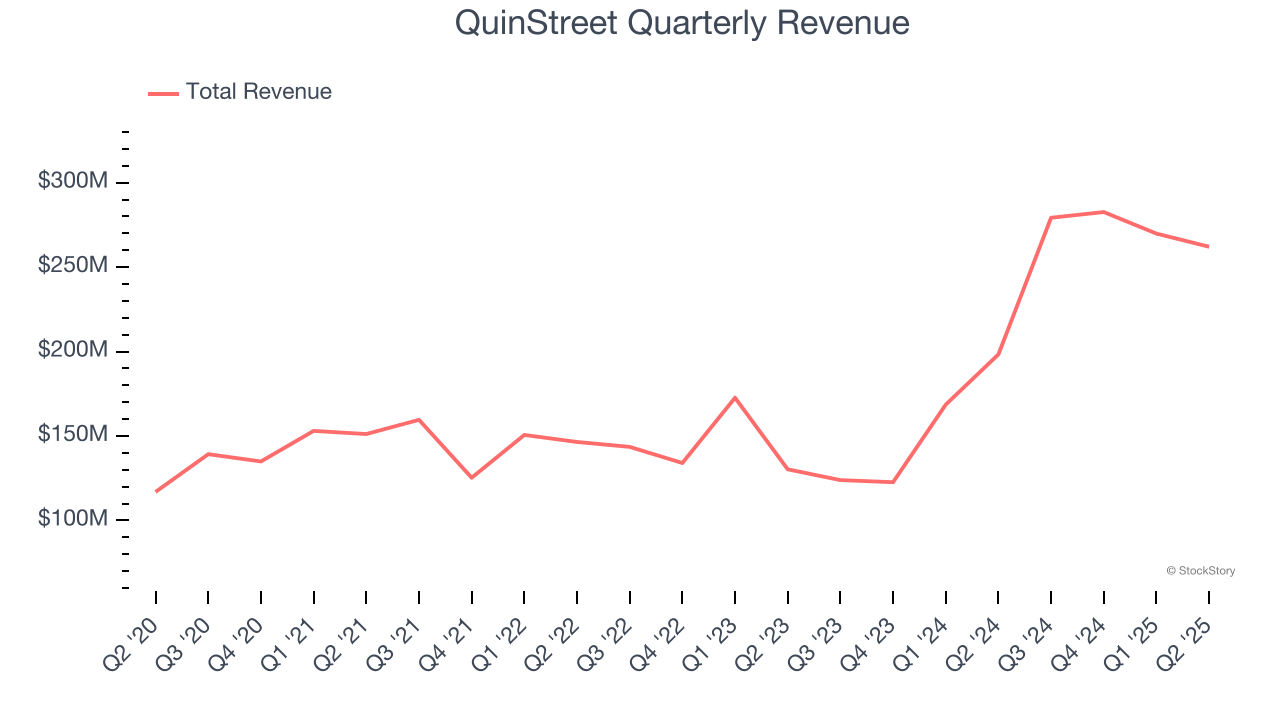
Long-term growth is the most important, but within business services, a half-decade historical view may miss new innovations or demand cycles. QuinStreet’s annualized revenue growth of 37.2% over the last two years is above its five-year trend, suggesting its demand was strong and recently accelerated. 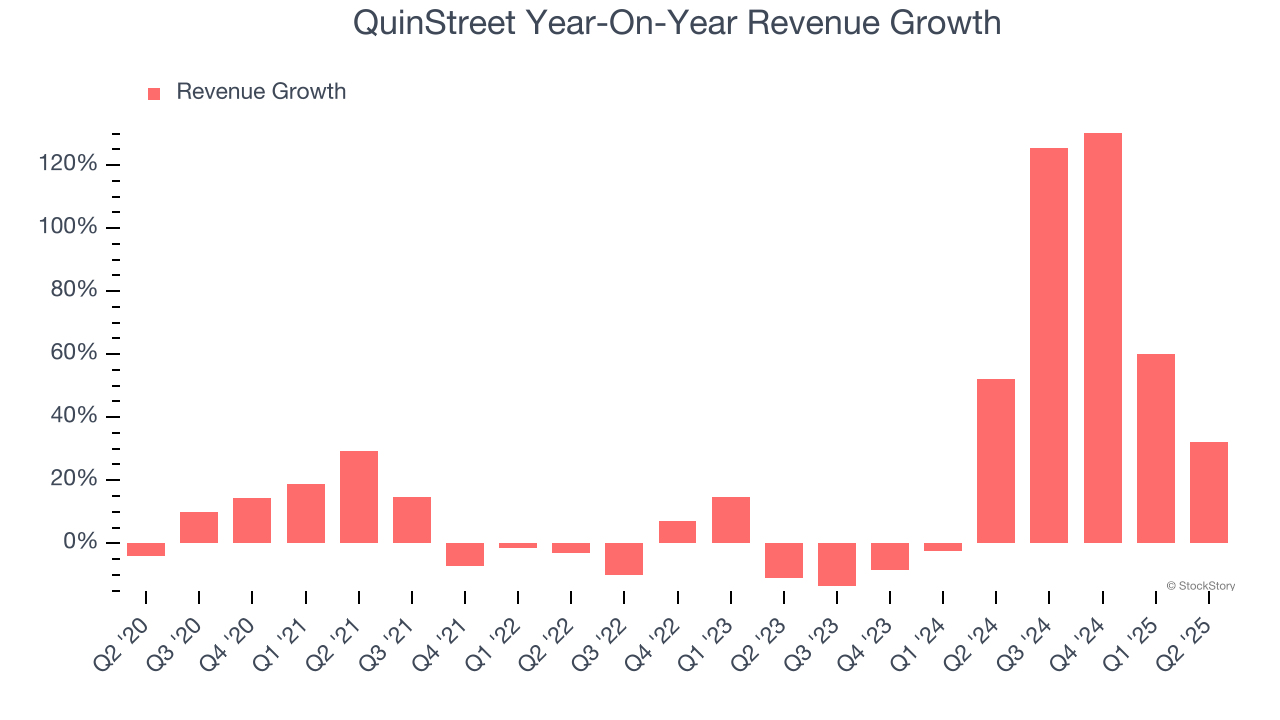
This quarter, QuinStreet reported wonderful year-on-year revenue growth of 32.1%, and its $262.1 million of revenue exceeded Wall Street’s estimates by 0.7%. Company management is currently guiding for flat sales next quarter.
Looking further ahead, sell-side analysts expect revenue to grow 6% over the next 12 months, a deceleration versus the last two years. Still, this projection is above average for the sector and indicates the market sees some success for its newer products and services.
Here at StockStory, we certainly understand the potential of thematic investing. Diverse winners from Microsoft (MSFT) to Alphabet (GOOG), Coca-Cola (KO) to Monster Beverage (MNST) could all have been identified as promising growth stories with a megatrend driving the growth. So, in that spirit, we’ve identified a relatively under-the-radar profitable growth stock benefiting from the rise of AI, available to you FREE via this link.
Operating Margin
Operating margin is an important measure of profitability as it shows the portion of revenue left after accounting for all core expenses – everything from the cost of goods sold to advertising and wages. It’s also useful for comparing profitability across companies with different levels of debt and tax rates because it excludes interest and taxes.
QuinStreet was roughly breakeven when averaging the last five years of quarterly operating profits, one of the worst outcomes in the business services sector.
Analyzing the trend in its profitability, QuinStreet’s operating margin decreased by 1.8 percentage points over the last five years. This raises questions about the company’s expense base because its revenue growth should have given it leverage on its fixed costs, resulting in better economies of scale and profitability. QuinStreet’s performance was poor no matter how you look at it - it shows that costs were rising and it couldn’t pass them onto its customers.
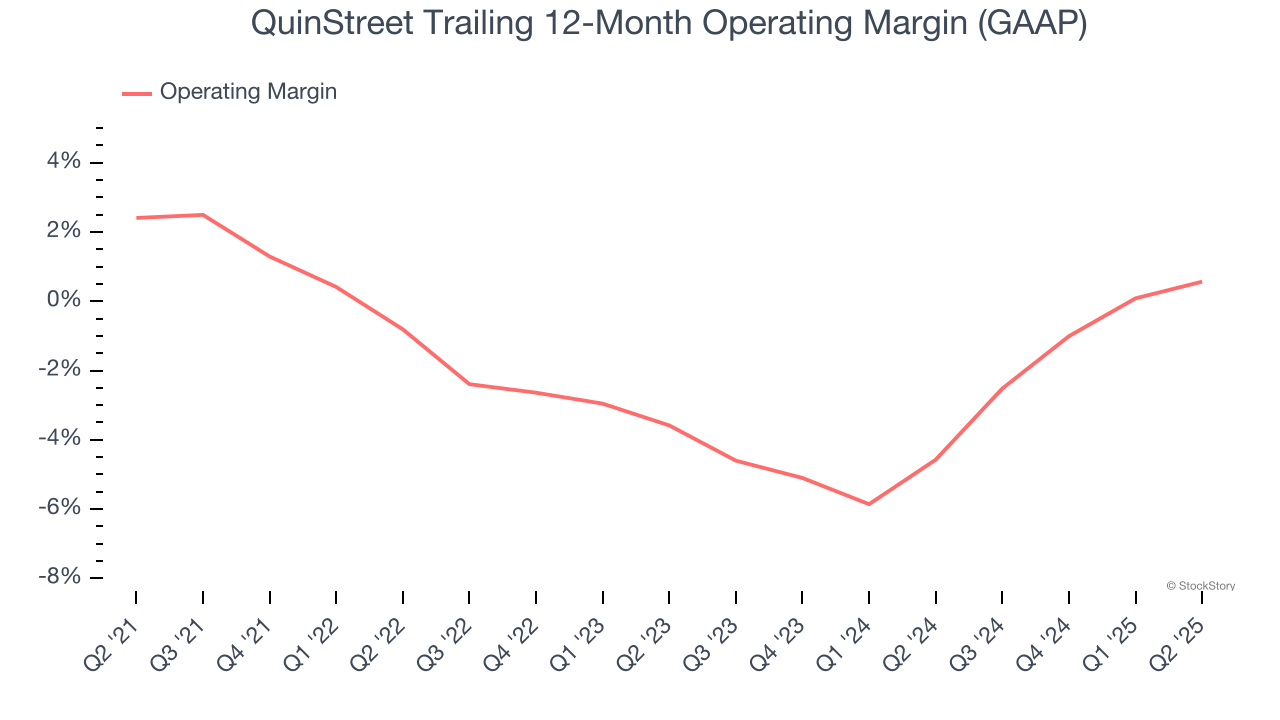
In Q2, QuinStreet generated an operating margin profit margin of 1.5%, up 2.2 percentage points year on year. This increase was a welcome development and shows it was more efficient.
Earnings Per Share
Revenue trends explain a company’s historical growth, but the long-term change in earnings per share (EPS) points to the profitability of that growth – for example, a company could inflate its sales through excessive spending on advertising and promotions.
QuinStreet’s EPS grew at a remarkable 11.5% compounded annual growth rate over the last five years. Despite its operating margin improvement during that time, this performance was lower than its 17.4% annualized revenue growth, telling us that non-fundamental factors such as interest and taxes affected its ultimate earnings.
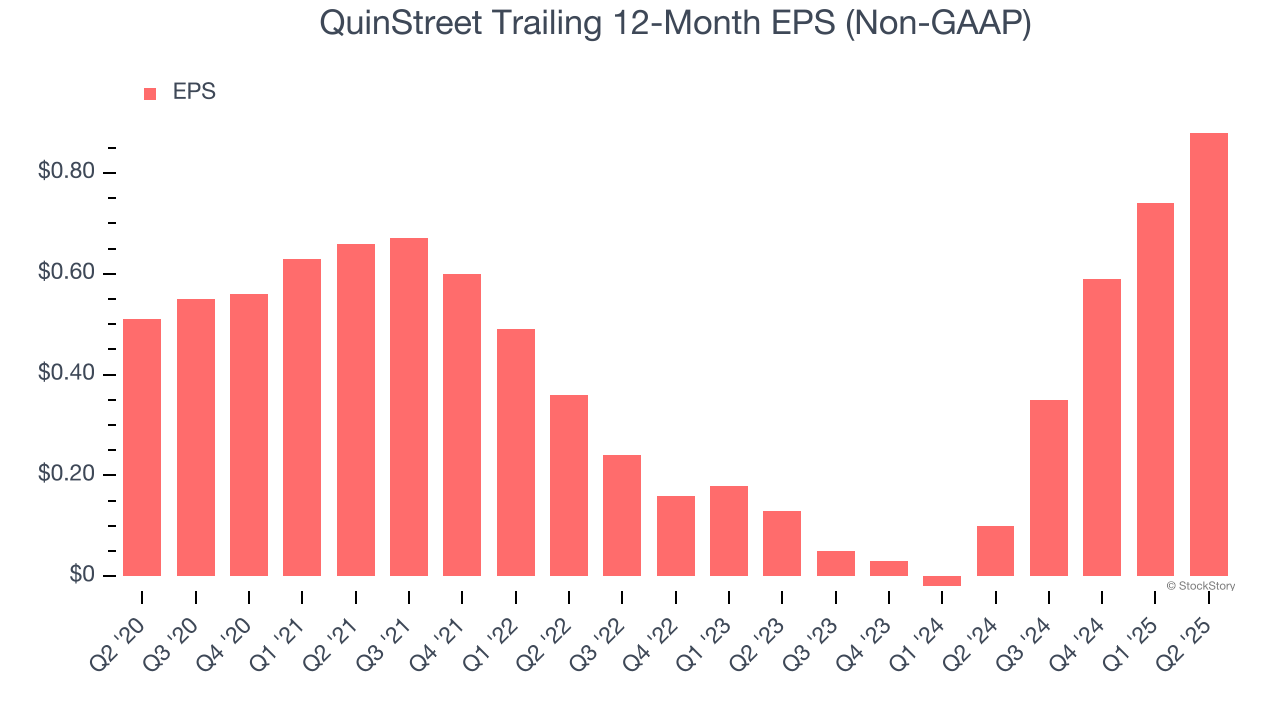
Diving into the nuances of QuinStreet’s earnings can give us a better understanding of its performance. As we mentioned earlier, QuinStreet’s operating margin expanded this quarter but declined by 1.8 percentage points over the last five years. Its share count also grew by 9.3%, meaning the company not only became less efficient with its operating expenses but also diluted its shareholders. 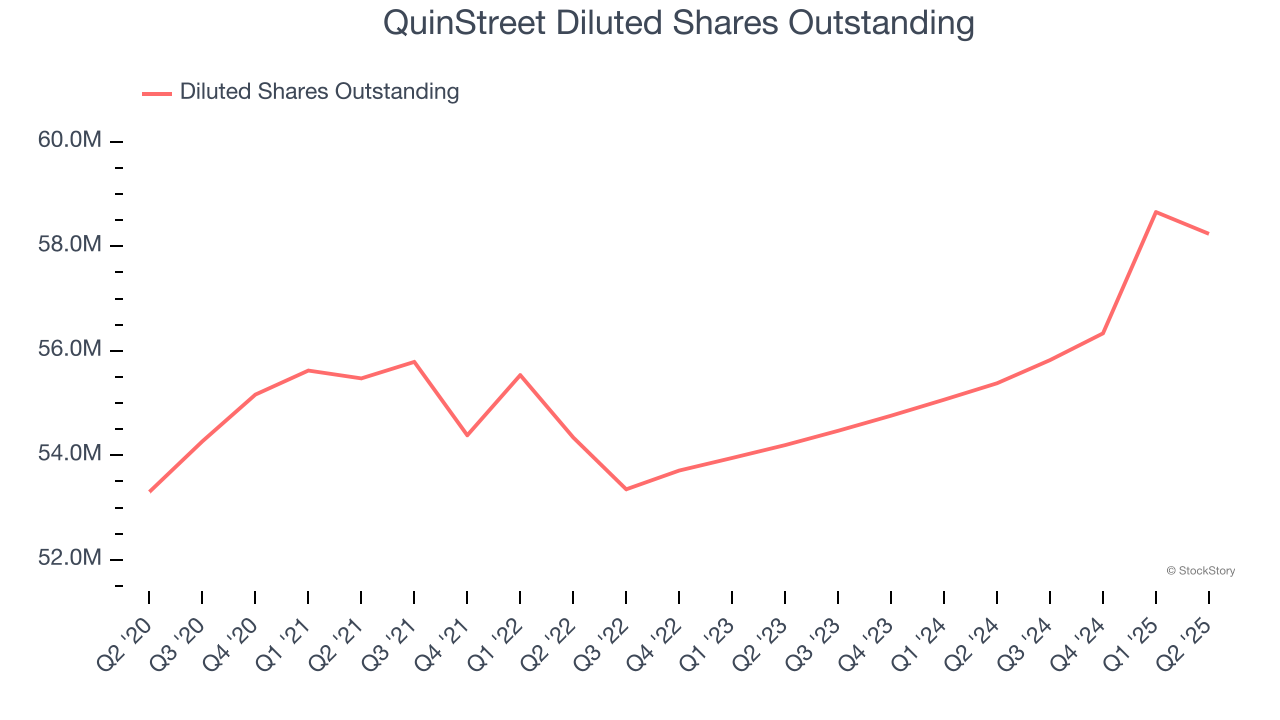
Like with revenue, we analyze EPS over a shorter period to see if we are missing a change in the business.
For QuinStreet, its two-year annual EPS growth of 160% was higher than its five-year trend. We love it when earnings growth accelerates, especially when it accelerates off an already high base.
In Q2, QuinStreet reported adjusted EPS at $0.25, up from $0.11 in the same quarter last year. This print beat analysts’ estimates by 1.6%. Over the next 12 months, Wall Street expects QuinStreet’s full-year EPS of $0.88 to grow 20.5%.
Key Takeaways from QuinStreet’s Q2 Results
It was good to see QuinStreet narrowly top analysts’ revenue expectations this quarter. On the other hand, its revenue and EBITDA guidance for next quarter missed. Overall, this quarter could have been better. The stock remained flat at $16.08 immediately after reporting.
QuinStreet may have had a tough quarter, but does that actually create an opportunity to invest right now? If you’re making that decision, you should consider the bigger picture of valuation, business qualities, as well as the latest earnings. We cover that in our actionable full research report which you can read here, it’s free.





